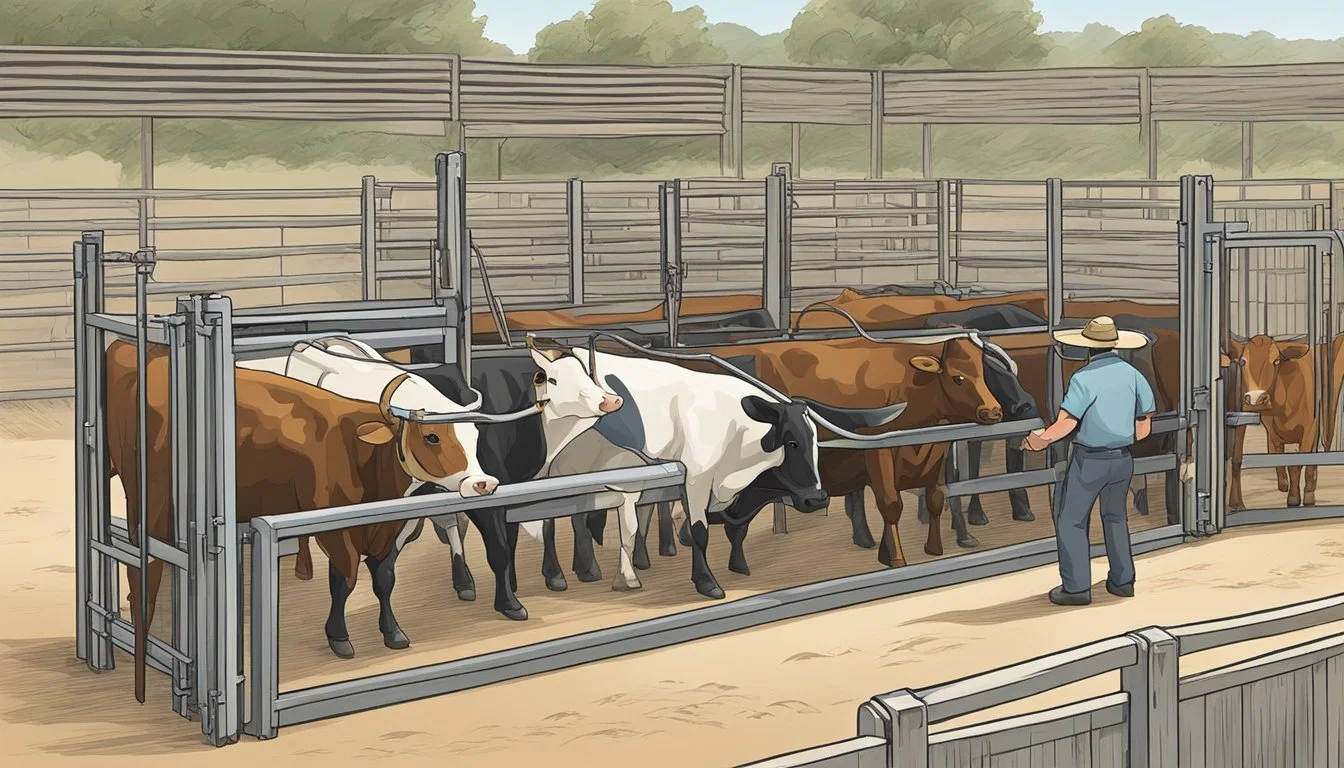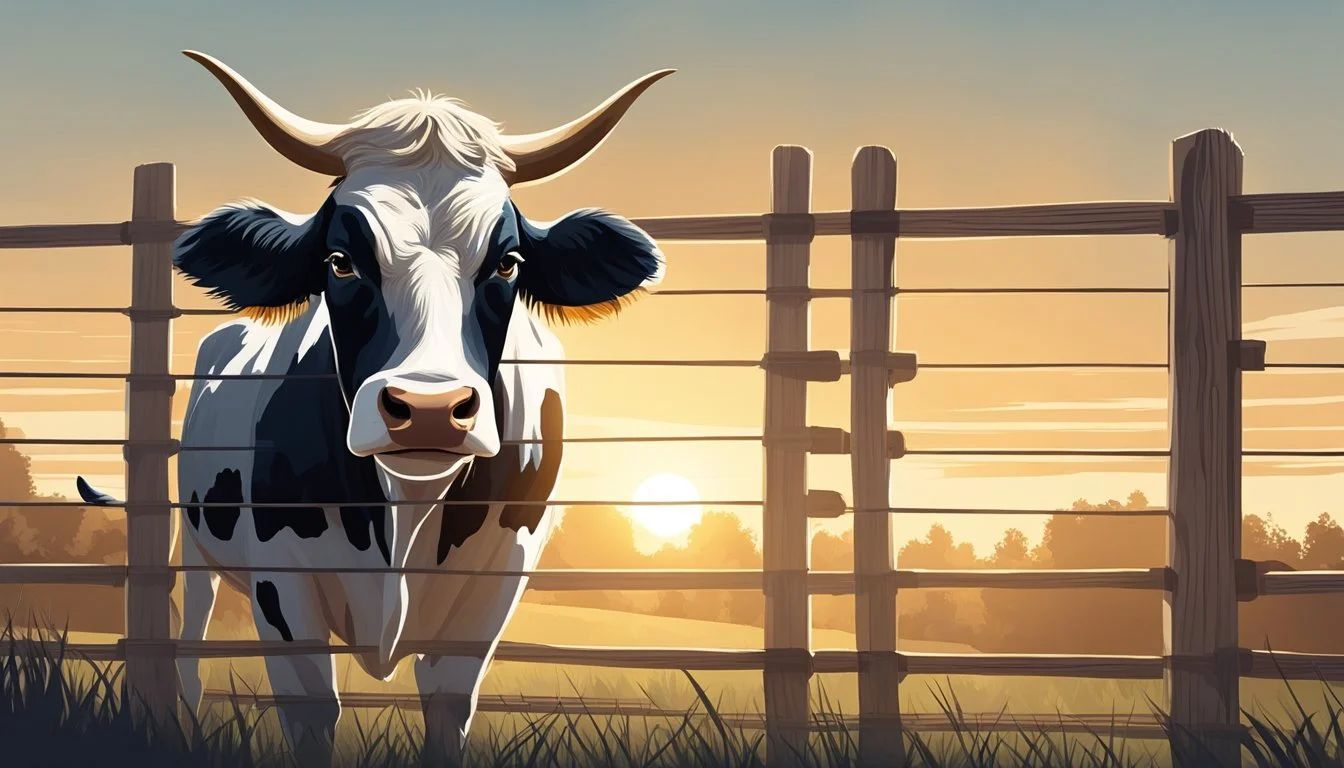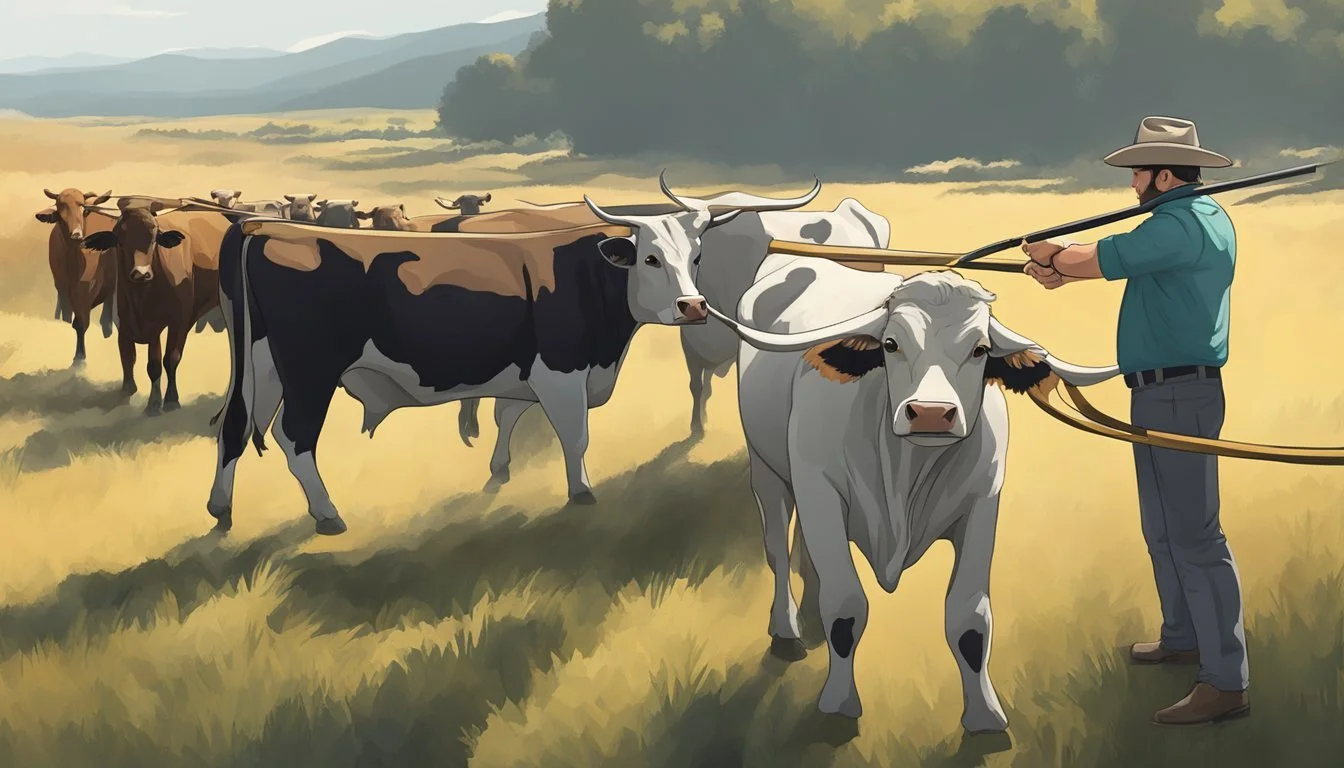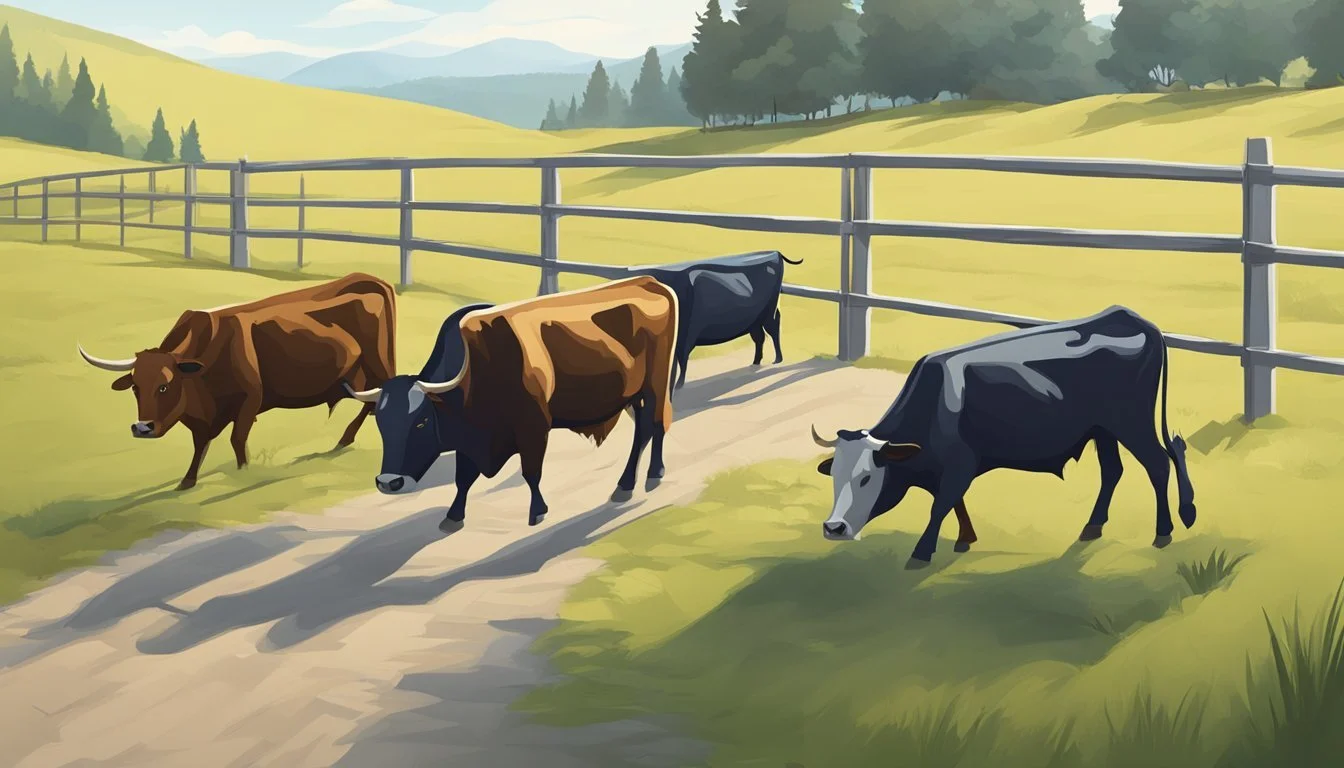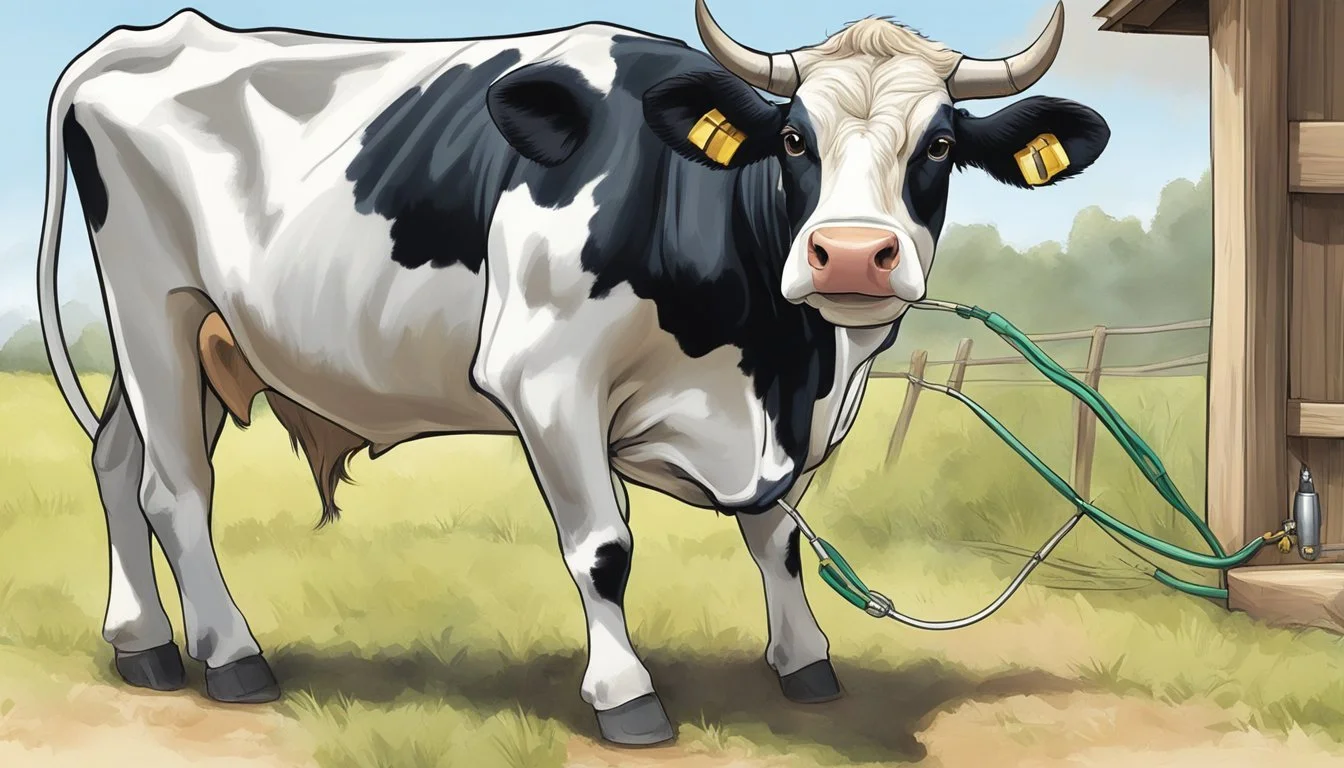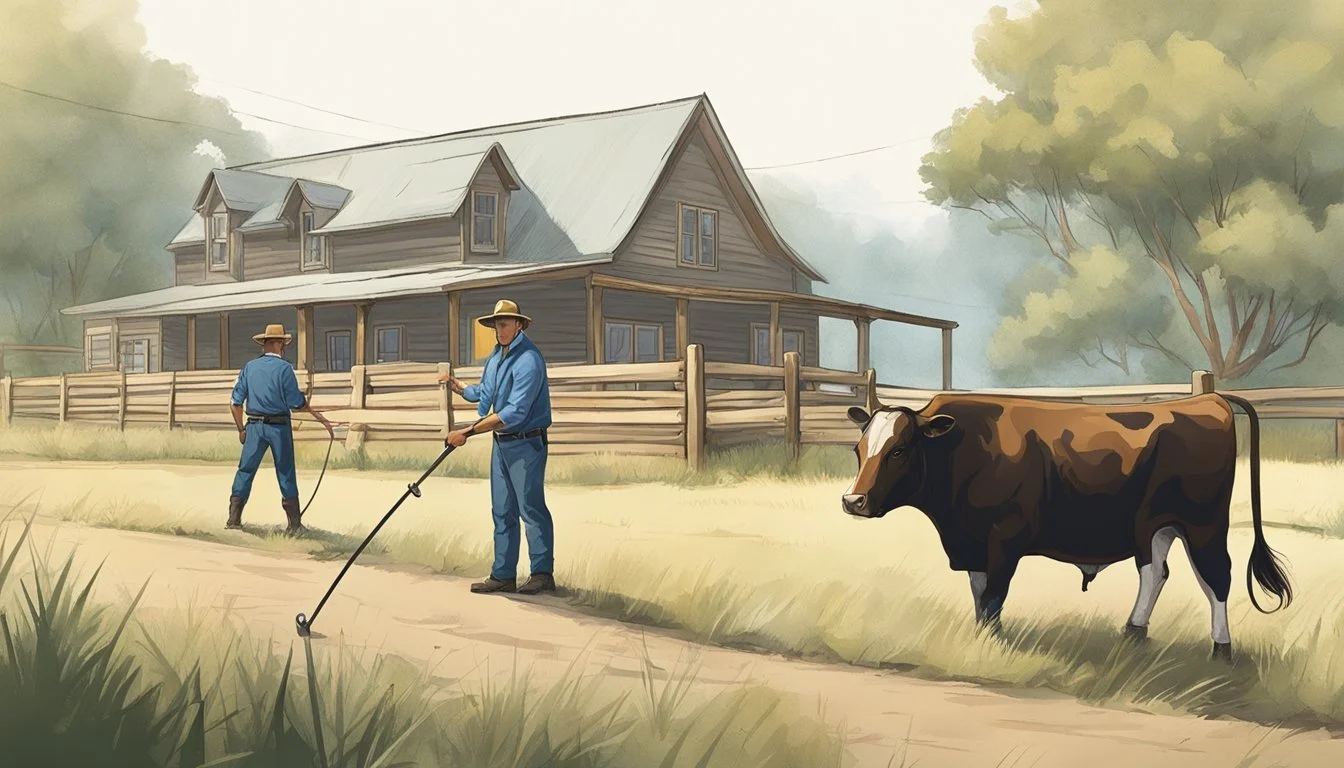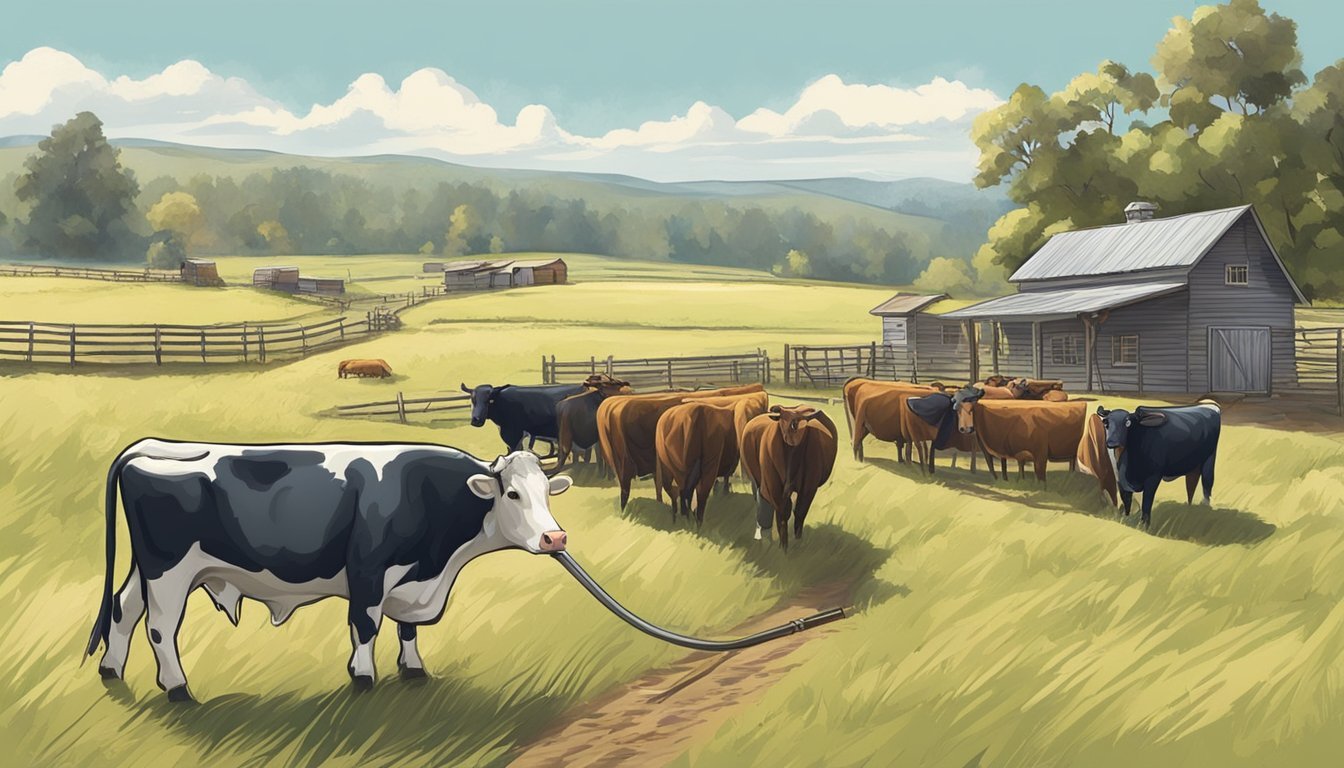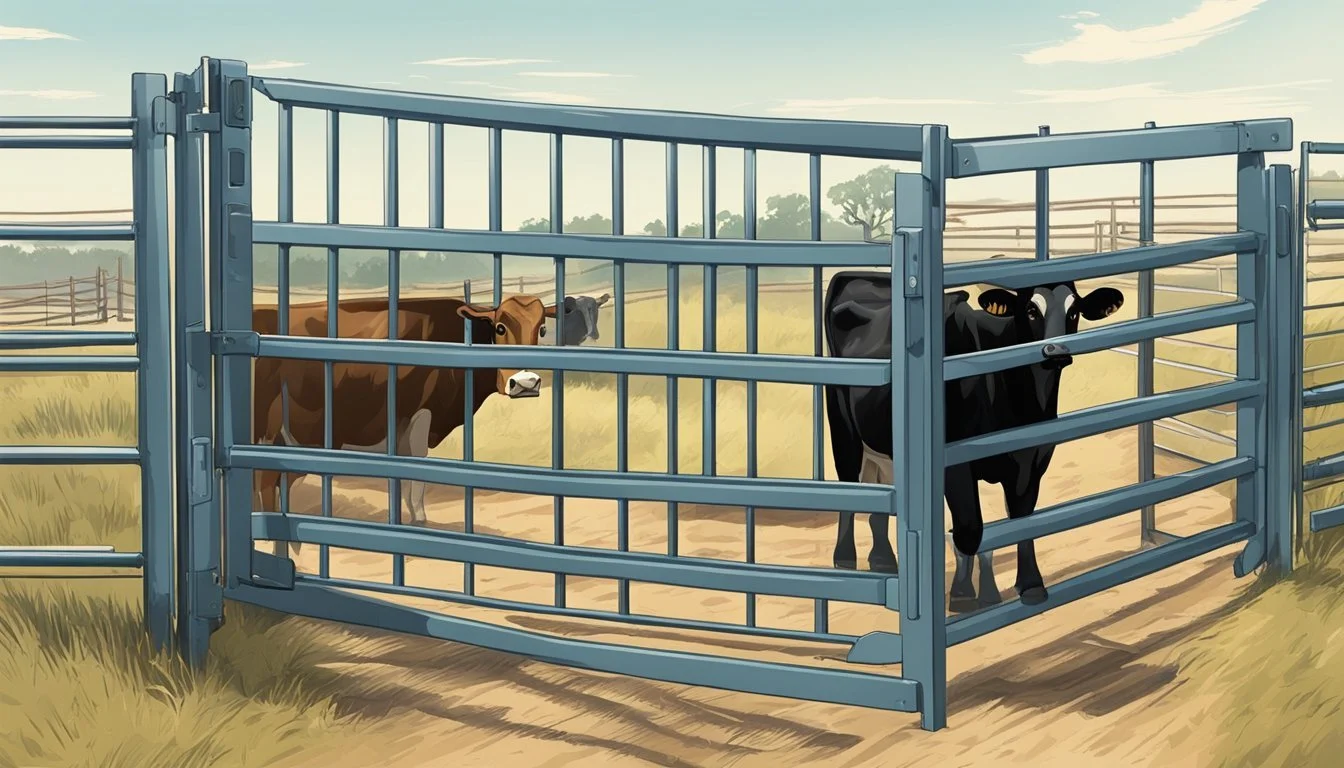Ultimate Guide to Using a Cattle Prod
Ensuring Safety and Efficiency in Homestead Cattle Handling
Using a cattle prod is a practice steeped in the tradition of livestock management, particularly when it comes to handling cattle. These handheld devices are designed to encourage cattle to move by eliciting a response to a mild electric stimulus, ensuring the safety of both the animals and the handlers during movements through enclosures or into transportation. The execution of this procedure calls for an understanding of bovine behavior to apply the stimulus effectively and ethically, minimizing stress for the cattle.
Safe cattle handling is paramount not only for animal welfare but also for the efficiency of farm operations. Techniques that promote low-stress handling are beneficial, as they contribute to a calm and controlled environment where cattle can be managed with confidence and expertise. Handlers equipped with the knowledge of proper use and timing, when applying the prod, can lead to safer, more efficient cattle management and avoid unnecessary distress to the animals.
Employing humane treatment standards is at the core of using cattle prods within a modern homestead or agricultural setting. These standards foster an environment where livestock is treated with care, ultimately reflecting on their health and the quality of produce obtained from them. It is through a blend of traditional methods and current animal welfare considerations that handlers can achieve optimal results in their cattle management routines, providing a harmonious balance between human intervention and the natural behavior of cattle.
Understanding Cattle Behavior
Effective cattle handling hinges on a thorough comprehension of bovine behavior. Recognizing stress factors and utilizing the science of herding can greatly enhance animal welfare and handling efficiency on the homestead.
The Science of Herding
Cattle are naturally gregarious animals, preferring the safety and familiarity of the herd. Handlers can utilize this instinctual drive to group by positioning themselves correctly, making herding more intuitive for the cattle. Low-stress handling techniques are paramount; they entail guiding the animals calmly and patiently, avoiding undue agitation.
Observation of Herd Dynamics: It is essential to observe how cattle interact within the herd to predict movements and guide them effectively.
Positioning and Movement: By working with the cattle's natural inclination to follow a leader, handlers can direct the herd efficiently.
Stress Factors and Their Management
Stress in cattle can provoke erratic behavior, leading to safety hazards during handling. Various factors contribute to stress, including loud noises, sudden movements, and improper use of handling tools like cattle prods.
Identification of Stressors: Handlers should be vigilant in recognizing the signs of stress, such as increased vocalization or pacing.
Implementing Calm Techniques: Utilizing a calm voice, avoiding rapid movements, and reducing noise levels can mitigate stress. Careful application of the cattle prod, only when necessary, can ensure compliance without heightening stress levels.
Animal welfare is directly linked to the understanding and management of cattle behavior. A poised and measured approach not only upholds the welfare of the animals but also secures the safety and effectiveness of the cattle handling process.
Principles of Safe Cattle Handling
Cattle handling on the homestead involves significant risks that necessitate adherence to specific safety principles for both handlers and animals. This section delves into the essentials of establishing handler safety and preventing injuries in cattle, guiding through the core strategies for a controlled and welfare-conscious approach.
Establishing Handler Safety
Understanding Animal Behavior: Handlers should be versed in cattle behavior, recognizing signs of distress or aggression to anticipate and avoid dangerous situations. It is essential to stay calm, move smoothly, and avoid sudden movements that may startle the cattle.
Proper Training and Equipment: Handlers must be adequately trained and equipped with the appropriate gear, including sturdy boots and gloves, to minimize the risk of injury. Training should cover the operation of handling facilities and implementation of low-stress handling techniques.
Preventing Injuries in Cattle
Facility Design: A well-constructed handling facility is crucial for animal welfare and can significantly reduce the incidence of injuries. Design elements should include non-slip surfaces, adequate space for movement, and the absence of sharp protrusions that can harm cattle.
Handling Techniques: Employ low-stress handling techniques that leverage the natural behavior of cattle. Methods should aim to encourage voluntary movement without the need for force. Excessive use of cattle prods or other driving aids can cause distress and injury and should be minimized.
By integrating these principles into cattle handling routines, homesteaders can ensure a safer environment for both handlers and cattle, prioritizing well-being and efficiency.
Cattle Prods: Usage and Ethics
The proper use of cattle prods is an essential part of ensuring both the efficiency of livestock handling and adherence to ethical animal welfare standards. Achieving a balance between these aspects requires informed decisions and humane practices.
Selecting the Right Cattle Prod
Selecting a suitable cattle prod involves considering its material, length, shaft, and the voltage it emits. The prod should be powerful enough to prompt movement without causing undue stress or pain. Material quality is key, with most prods having a fiberglass shaft which provides durability and flexibility. The length of the prod should be appropriate for the size of the cattle and the environment in which they are handled; for example, a 36-inch prod could provide adequate distance between handler and animal in open spaces.
Voltage: Opt for a unit that delivers a mild electric shock sufficient to encourage movement but not harm the animal.
Comfort: A rubber handle can provide a comfortable grip for the handler, reducing fatigue during use.
Ethical Standards and Animal Welfare
The ethics of using cattle prods revolve around ensuring humane treatment of animals. Ethical standards require handlers to use prods sparingly and as a last resort, avoiding any unnecessary stress or pain to the livestock.
Animal Welfare: Handlers should be trained to use prods in a way that minimizes fear and distress, keeping electric shock usage to a minimum.
Humane Practice: The goal is to guide animals with as little intervention as possible, using alternative methods such as vocal cues and body language before resorting to a prod.
Ethical standards often suggest a very low percentage of prod usage, aiming towards zero percent when moving groups of cattle and reserving the tool for specific situations, such as guiding individual animals through a chute. These practices not only align with humane animal welfare considerations but also reflect an efficient and responsible approach to cattle management.
Operational Aspects of Cattle Prods
Cattle prods, essential for directing livestock, employ electric shocks delivered via a handheld device. Understanding their technical specifications and proper maintenance is crucial for effective and humane usage.
Technical Specifications
Cattle prods function by converting the power from batteries into a high-voltage, low-current electric shock delivered through the shaft. The voltage of these prods is designed to be strong enough to motivate the cattle to move, without causing long-term harm. Typically, the batteries are either replaceable or rechargeable. The shaft is usually made from materials such as fiberglass, ensuring durability and ease of handling.
Technical Breakdown:
Voltage: High enough to stimulate, not harm.
Batteries: Replaceable or rechargeable.
Shaft: Commonly fiberglass, for durability.
Maintenance and Care
Regular maintenance and care are necessary to ensure the longevity and safe operation of cattle prods. Cleaning the device after each use is important to prevent build-up that can degrade the electrodes or the shaft. Battery terminals should be kept free of corrosion, and rechargeable batteries must be charged as per the manufacturer's instructions to maintain optimal performance.
Maintenance Checklist:
Cleaning: After each use, clean to prevent residue build-up.
Battery Care: Check and clean terminals; follow charging guidelines.
Storage: Store in a dry, cool place to prevent damage.
Cattle Handling Facilities and Design
Effective cattle handling facilities are essential for the safety of both livestock and handlers, and play a pivotal role in the efficiency of farm operations. Thoughtful design, taking into account flow and ease of control, can lead to facilities that are ergonomic and reduce stress for both cattle and handlers.
Components of Handling Facilities
The primary components of a well-designed cattle handling facility include holding pens, sorting pens, alleys, and chutes. Holding pens should have ample space, offering at least 20 square feet per cow and 14 square feet per calf. Sorting pens are utilized for separating cattle based on criteria such as age, sex, or medical needs. Alleys need to facilitate smooth cattle movement towards the chutes, which are crucial for individual handling, treatments, and inspections.
Holding Pens: 20 sq. ft/cow, 14 sq. ft/calf
Sorting Pens: Used for cattle separation
Alleys: Connect pens and lead to chutes
Chutes: Secure cattle for individual handling
Designing for Safety and Efficiency
Safety features in the design of handling facilities are of utmost priority. This not only protects handlers and animals but also ensures operations proceed smoothly. Ergonomic design minimizes the need for physical force, reducing the risk of injury. Chutes, for instance, should have proper restraints and non-slip flooring to prevent accidents. Efficient flow through the facility can be achieved by considering cattle's natural behaviors, allowing for intuitive movement and reducing stress.
Key Design Considerations for Safety and Efficiency:
Non-slip Flooring: Prevents cattle and handler slips
Cattle Flow: Layout should align with natural behaviors
Restraints: Chutes equipped to secure without harm
Visibility: Handlers maintain visual control over cattle
The design of each component should contribute to a seamless and stress-free flow, achieving a balance of control for handlers and freedom of movement for the cattle.
Advanced Handling Techniques
Effective cattle handling is crucial for the safety and welfare of both the cattle and their handlers. Advanced handling techniques have evolved to incorporate both innovative technology and a solid understanding of animal behavior.
Incorporating Technological Advancements
Technological advancements have revolutionized the way handlers manage and move cattle. One significant innovation is the use of LED lighting to direct cattle movement. By understanding cattle perception, handlers can strategically place lights to guide cattle pathing, making the process smoother and less stressful. Furthermore, the integration of drones can offer a bird's-eye view of the herd, allowing for more precise movements and less reliance on multiple handlers or herding dogs.
LED Lighting: Placement is key; cattle tend to move away from shadows and towards well-lit areas.
Drones: Used for monitoring and moving herds across vast spaces without physical pressure.
Utilizing Low-Stress Techniques
Low-stress handling techniques are paramount for both animal welfare and operational efficiency. The principles developed by Dr. Temple Grandin have been foundational in shaping low-stress cattle handling methods. These techniques, such as using the cattle’s flight zone and point of balance for movement, can minimize stress and improve cattle's overall well-being. Positive reinforcement training also plays a role in fostering cooperative behavior, reducing the need for forceful handling devices like cattle prods.
Flight Zone: Handlers must understand and respect the flight zone to move cattle effectively.
Positive Reinforcement: Rewards-based training enhances cooperation and reduces stress during handling.
Compliance with Regulations
In the realm of livestock management, adherence to regulatory guidelines is essential to ensure the welfare of the animals and the safety of handlers. It requires a detailed understanding of the laws and the establishment of robust safety and welfare protocols.
Understanding Livestock Management Laws
Regulatory compliance is paramount when using cattle prods for the humane treatment of livestock. In the United States, the guidelines set by the North American Meat Institute provide a consensus on humane handling which helps to safeguard animal welfare. These regulations dictate the proper use of electric prods and emphasize minimizing their use to prevent undue stress on the animals. Moreover, the Food Safety and Inspection Service (FSIS) enforces federal laws that mandate humane handling and slaughter, as outlined in 9 CFR Part 313. Compliance with these regulations is not only a legal obligation but also a moral one, ensuring livestock are managed with the utmost care.
Safety and Welfare Protocols
Ensuring safety and animal welfare involves systematic protocols:
Safety Features: Include periodic testing of cattle prods to confirm they deliver the correct voltage and minimize harm.
Humane Treatment: Train handlers thoroughly on when and how to use a cattle prod appropriately, avoiding overuse and focusing on alternative methods to encourage livestock movement.
Regular Audits: Conduct frequent inspections and audits to measure compliance with the humane treatment guidelines recommended by the North American Meat Institute and FSIS. These can include examination of electric prod use and facilities reviews.
A consistent commitment to these practices contributes to the high standard of livestock management on the homestead. Compliance is not only about adhering to laws but also about investing in the welfare of the animals and the integrity of the agricultural industry.
Cattle Prod Features and Selection Criteria
When selecting a cattle prod, durability and comfort are paramount for effective livestock management. A durable cattle prod should have a robust construction, often featuring a fiberglass or plastic shaft that withstands regular use and various weather conditions.
Safety features are a critical component of cattle prod design. A safety switch prevents accidental discharge, ensuring the prod is only active when intentionally in use. This contributes to both the handler's and animals' well-being.
Insulation on the handle is another important aspect, providing protection against accidental shocks and improving the handler's grip. A comfortable grip is also essential to help prevent fatigue during extended periods of handling.
Battery power is a consideration for those who need portability and convenience. Many modern cattle prods have rechargeable batteries, eliminating the need for constant replacements. The availability of intensity levels allows handlers to adjust the electrical output to the appropriate level for different sizes and temperaments of cattle, promoting efficient and humane handling.
Here is a brief overview of important features to consider:
Durability: Look for strong materials like fiberglass.
Safety Switch: Essential to prevent unintended use.
Insulation: Ensures grip safety and comfort.
Comfortable Grip: Reduces fatigue during use.
Battery: Preferably rechargeable for cost-effectiveness.
Intensity Levels: Adjustable to cater to various cattle needs.
In summary, choose a cattle prod that offers a combination of safety features, durability, comfort in handling, ease of use, and adjustable intensity levels for a safe and efficient cattle handling experience.
Training Handlers for Best Practices
Proper training of handlers is essential for the safe and efficient use of cattle prods. Handlers need to be versed in both the functionality of the device and the nuances of cattle behavior. Training should emphasize the principles of positive reinforcement over punishment to ensure that animal welfare is kept at the forefront of livestock management practices.
Initial Training:
Product Knowledge: Handlers must understand how electric prods work, including their features and limitations.
Operation Techniques: They should learn how to activate and deactivate the prod safely.
Safety Measures: They are taught to wear protective gloves and clothing to prevent accidental shocks.
Training programs must incorporate scenarios that allow handlers to experience real-life situations. Role-playing exercises can enhance their ability to apply their knowledge practically.
Understanding Animal Behavior:
Handlers are trained to read cattle's body language and determine the most effective way to guide them using minimal force.
The focus is on moving animals slowly and calmly to avoid stress and potential aggression.
Reinforcement Techniques:
Positive Reinforcement Training: Handlers should reward desired behaviors to promote cooperation from the cattle.
Continuous improvement is encouraged by providing handlers with regular updates on the best handling techniques and safety protocols.
Handler Safety:
Education on the importance of remaining calm and deliberate in actions to prevent injury.
Handlers must learn to avoid placing themselves in harm's way and always work in teams when necessary.
The table below summarizes the key areas of focus:
Focus Area
Product Knowledge
Operation Techniques
Safety Measures
Animal Behavior
Positive Reinforcement
Handler Safety
Description
Understanding the cattle prod's functions and safety features (Product Knowledge)
Learning to use the prod responsibly and effectively (Operation Techniques)
Adopting practices that protect both handler and cattle (Safety Measures)
Recognizing signs to predict cattle responses (Animal Behavior)
Using rewards to guide cattle behavior (Positive Reinforcement)
Prioritizing safety through education and teamwork (Handler Safety)
Productivity and a positive environment are byproducts of a well-trained team who understands the best practices in using cattle prods.
Management of Diverse Cattle Groups
When managing diverse cattle groups, it's imperative to understand the appropriate handling techniques for different ages and temperaments. Effective strategies will facilitate safe movement and separation of livestock for various husbandry tasks.
Handling Calves and Mature Cows
Calves require a gentler touch compared to mature cows. Their herding should prioritize minimal stress to prevent injury and promote healthy development. For mature cows, consistent handling routines create a sense of familiarity, reducing agitation during movement. When using cattle prods, they should only be used sparingly and when absolutely necessary to direct movement, ensuring the safety and well-being of the animals.
Calves: Soft barriers, vocal cues, and light nudging.
Cows: Calm, deliberate movements and the occasional use of cattle prods if needed.
Strategies for Handling Stubborn or Agitated Animals
Animals that display stubbornness or agitation require special attention. It's critical to identify the root cause of stress to address it properly. Forcing such animals can escalate the situation; therefore, a combination of patience and firm, non-violent cues are advisable.
Understand behavioral cues: Lowered heads or pinned ears can indicate discomfort.
Use of cattle prods: Only as a last resort, and never repeatedly on the same animal.
Separating Livestock for Specific Tasks
Separating livestock for tasks such as vaccinations or herd management is a task that needs to be handled efficiently. Separate animals using natural herd movement to guide them into different pens or enclosures. Judicious use of cattle prods can aid in directing specific animals, but should never replace proper herding techniques that rely on the animals' instinctual behaviors.
Designate areas for specific tasks: Ensure clear paths to reduce confusion and stress.
Controlled use of prods: To guide individual animals without causing distress.
Practical Applications
In the context of homestead livestock management, the cattle prod serves as a tool for directing and controlling cattle movement with assurance and precision. Key applications include the safe loading and unloading of livestock, as well as guiding them through chutes and pens.
Loading and Unloading Livestock
When livestock need to be moved onto or off trailers, control and safety are paramount. A cattle prod can be used to encourage movement in a specific direction.
Loading: Position cattle at the entry point of the trailer. Use the cattle prod sparingly to direct them into the trailer, ensuring a steady flow.
Unloading: As cattle exit the trailer, use the prod to maintain direction and prevent bottlenecking at the unloading point.
Navigating Livestock Through Chutes and Pens
The prod facilitates efficient handling while navigating cattle through confined spaces.
Chutes: Guide cattle through chutes with minimal stress, using the cattle prod to prevent backflow and keep steady movement.
Pens: When moving cattle into pens, a gentle prod can ensure they continue in the desired direction without undue stress or injury.
In both scenarios, the cattle prod plays a role in managing the cattle's path while fostering a calm and orderly environment.
Evaluating the Impact on the Market and Society
The use of cattle prods in livestock handling has tangible effects on the market dynamics of cattle farming and influences societal viewpoints related to ethical animal treatment.
The Economic Value of Effective Cattle Handling
Effective cattle handling techniques, which may include the use of cattle prods, have a direct correlation with market profitability. When cattle are moved and managed efficiently, stress on the animals is minimized, resulting in:
Improved Weight Gain: A direct impact on livestock growth rates and the quality of meat produced.
Reduced Injuries: Both to handlers and animals, potentially lowering veterinary costs and loss of animals, thus beneficial for profitability.
Social Perceptions of Livestock Farming
Livestock farming is subject to societal scrutiny, particularly regarding animal welfare and ethical standards. The employment of cattle prods is on the radar of various consumer groups, with considerations including:
Animal Welfare Advocacy: Organizations often push for regulations that ensure humane treatment, which can influence market dynamics and consumer preferences.
Public Opinion: Ethical production methods can affect consumer choices and pressure the industry to adapt or re-evaluate handling practices.
Future of Cattle Handling Technologies
As the agricultural industry evolves, the advent of new technologies has the potential to enhance both the efficiency and humaneness of cattle handling processes on homesteads.
Emerging Innovations in Handling Equipment
In the realm of handling equipment, technological advancements are aiming to improve the safety and well-being of cattle, as well as the efficiency with which farmers and ranchers operate. Innovations include equipment that works in unison with the natural instincts and behaviors of cattle to reduce stress. Modern stock prods are now more sophisticated, incorporating features that allow for controlled and reduced voltage to ensure minimal discomfort to animals during herding.
Portable Handling Equipment: The evolution of equipment has led to the development of lighter, more portable systems that are easier to set up and dismantle, which is particularly advantageous for smaller homesteads and diverse terrains.
Automated Systems: From automatic gates to chute systems equipped with sensors, technology is progressing towards reducing the manual labor required in cattle handling.
Impact of Global Trends on Cattle Handling
Global trends are influencing cattle handling practices, driven by a growing market demand for ethical animal treatment and sustainable farming operations.
Market Pressures: There is increasing pressure on the market to adopt practices that are not only effective but also socially responsible. This has led to more research and development in humane handling technologies.
Technology Integration: The integration of technology in handling practices, such as the use of drones for herding and monitoring cattle, has the potential to transform how livestock are managed on a large scale.
By aligning with these global trends, farmers and ranchers can continue to respond to market demands and improve the welfare of their cattle through the adoption of advanced handling technologies.

